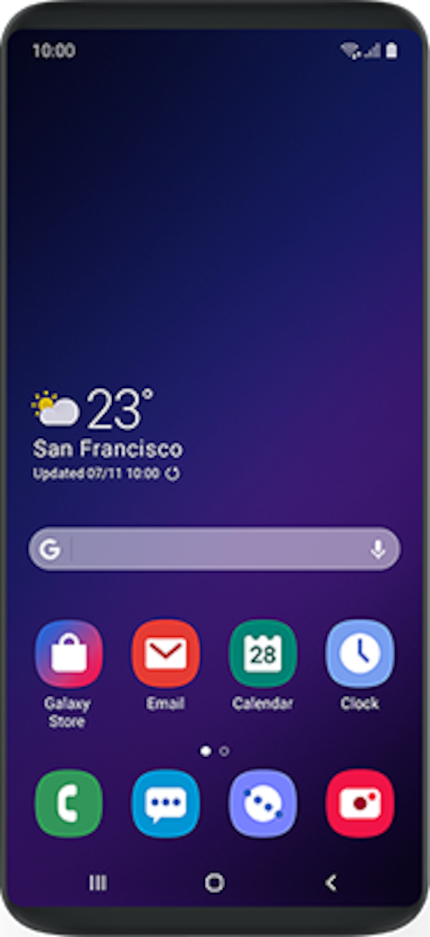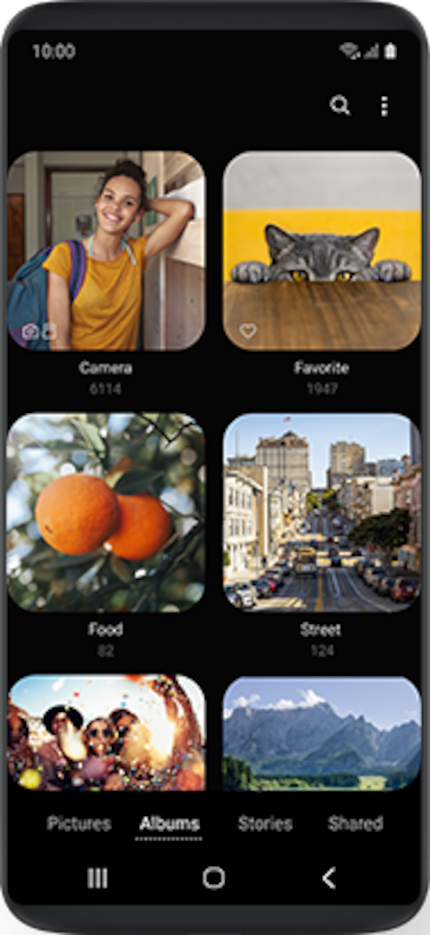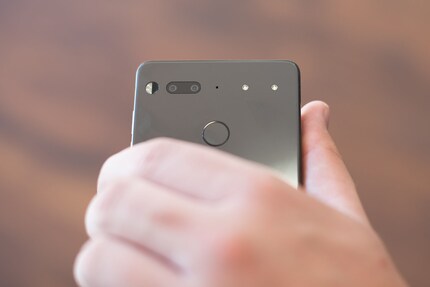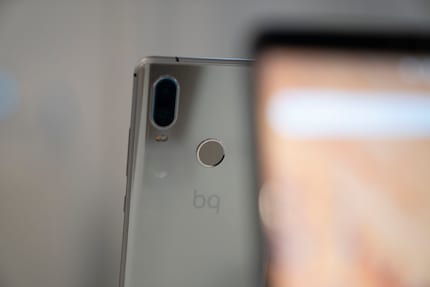
Background information
Snapdragon, Kirin and Exynos: What do mobile processors do? And what's behind the terms?
by Dominik Bärlocher
Samsung has shown its new One UI. But the update to it is a long time coming. An attempt to explain why Android can no longer be like Apple.
Tim Cook, Apple's CEO, stands on a stage. He talks about a new software version for his iPhones. Hours later, the red 1 lights up next to the settings on iPhones and iPads around the world. Update Time. On all generations of iPads and iPhones, mind you, not just the latest ones.
Meanwhile, over at Android. Users are wondering: Is the update coming? The same updates bump in somehow, at some point, more randomly than coordinated. Even the monthly security patches are one of those things. Sentences like "It's running Android 8.1. with the August 2018 patch" are often heard in the digitec editorial team. Even brand-new phones are delivered with outdated software versions.


"Why is that actually the case?" video producer Stephanie Tresch asks me before a shoot.
Because she actually wants to test Samsung's new user interface called One UI. But she can't because the software is only in the beta stage. And then only rolled out in selected nations. For her as a journalist with an eternal thirst for knowledge, such a situation is unbearable.
The reason: money.
Android is an open operating system. This means that you can download Android's source code for free and then do whatever you want. This may not make much sense for you as a private user, but companies have jumped on the bandwagon.
A free operating system means that less money has to be invested in development.
Despite this, they have made adjustments, because Android is more of a platform than a finished operating system. Android can do all sorts of things and lets users influence a lot. Companies like to put their name on everything. The red logo of the camera manufacturer shines large on the back of the Red Hydrogen One. When you start up a Huawei phone, you currently see three different animations where the letters H, U, A, W, E and I appear on the phone screen. This is called brand recognition.

Combine that with the occasional idea that makes something better or different, or the need to communicate with a non-standard API - the Essential PH-1 with its modular camera, for example - and sometimes the hardware manufacturer has to make significant changes to the source code.
Changes to the source code mean engineering, validation and testing. This means that more money has to be invested in development.
Then there are cases where, in addition to optimising the code, a manufacturer has simply changed things because they can. User interfaces are one of them. Samsung has historically specialised in this. On old versions of their Android ROM, as the customised software versions are called, core Android functions and standard APIs have been manually ripped out of the code or not made available to the user. In addition, the user interface has been radically customised, back then in blue and neon green, today in white and blue. I've also been fighting a battle against Huawei's Emui for about two years, which is the only weak point in their phones this year and is simply ugly and clunky.
Customising the user interface means more money needs to be put into development.
When Google releases an Android update, the industry is forced into action. Because users want the latest of the new on their phones. After all, you've spent up to 1000 francs on your new phone.
First, manufacturers have to wait for chipmakers like Qualcomm - whose Snapdragon systems-on-a-chip (SoC) are the de facto industry standard - to adapt the code of their hardware so that it is compatible with the new software. Once this has been done, the coders from the phone manufacturer can get to work.
Depending on how much the manufacturer has customised its Android ROM, it will take longer before adjustments can be made to the APIs. Every bit that is not supported by default has to be rewritten in the code. Then validation and testing again, because no manufacturer wants to give a buyer software that doesn't work. The PR disaster would be unimaginable. This process doesn't always take the same amount of time, but it does take time.
API customisations and all the other edits to the code cost money.
When you buy a phone, you assume that you won't buy a new one for about two years. Unless you have a "catastrophic failure", which is jargon for "I dropped the fucking thing and it broke".
But a manufacturer has no interest, economically speaking, in you keeping your phone for a long time. Huawei has released two flagships this year, Samsung as well, Sony announced the XZ3 days after the launch of the XZ2 and LG has launched what feels like 27 versions of its V30.
But since you already own a phone, you will ignore many of these phones. Why should you pay attention to them? Because spending 1000 francs twice a year on a mobile phone is idiotic. Except for "catastrophic failure". Then you can think about it, even if it hurts.
Software updates are free. Nobody earns money from them. One of the rules of the Android game is that you are not allowed to charge money for the distribution of Androids.
So the manufacturer only makes money with hardware.
Engineering costs money. But updates don't make money and new devices that can make money are only a few months away. That's why manufacturers invest as little as possible in code adaptations for old devices, even if you think your twelve-month-old mobile is still state-of-the-art.
Manufacturers prefer to throw their bright engineers' heads into adapting the code for new, beautiful devices, which will then put money back into their coffers. Because every company, no matter how big, has budget targets that they have to meet at the end of the year.
That's why you wait for your updates.
Android parent company Google, or its holding company Alphabet, no longer thinks this is so cool. Google does not launch new versions of the software on the market so that manufacturers can use it to blackmail users. If anyone is blackmailing anyone, it's Google. To this end, the company, whose motto is no longer officially "Don't Be Evil", has launched three initiatives. The new motto is "do the right thing", whatever that may be.
The large corporations have concluded so-called original equipment manufacturer contracts (OEM contracts) with Google. In these contracts, the OEMs undertake to comply with certain guidelines. These include the requirement to guarantee two-letter upgrades. In other words, if Huawei signs the contract, it must also deliver Android Q and R, i.e. the two subsequent versions of the software, on a mobile that is delivered with Android P.
To this end, Google attempted to completely restructure Android last year. The whole thing is called Project Treble and puts an end to hardware customisations. In other words, the chip manufacturers are off the hook. These APIs simply run with Android, come what may. So the OEM can go on the rampage immediately. This has the advantage that you as a user can get your update faster and the chip manufacturer can save money by using Treble.

Variant three is called Android One, formerly Android Go. Google has created a version of Android that is fundamentally similar to Apple's iOS operating system. Essentially, Google has built an Android distro and said "Who wants it?" All manufacturers who responded with "Here! Me!" only have to use certain interfaces in the hardware design and then Android One will run. With Treble Support, the updates are quick and uncomplicated and don't require a long history until the update arrives, but can be rolled out globally immediately, just like Tim Cook's software forge. Manufacturers that have committed themselves to Android One include Nokia and BQ. The latter, however, is making a name for itself by working closely with Google on the further development of One.
Journalist. Author. Hacker. A storyteller searching for boundaries, secrets and taboos – putting the world to paper. Not because I can but because I can’t not.
Interesting facts about products, behind-the-scenes looks at manufacturers and deep-dives on interesting people.
Show all